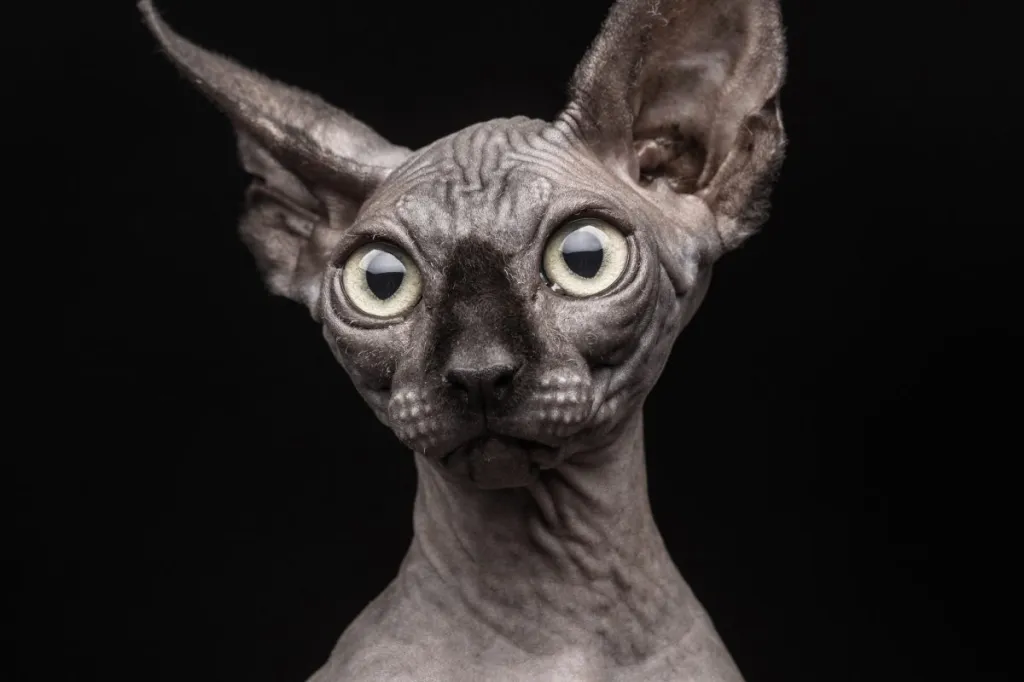Sphynx cats, often referred to as the “naked cat,” is one of the most distinctive and unique breeds in the feline world. What sets the Sphynx apart is its striking lack of fur, revealing a warm and inviting personality that has captivated cat lovers worldwide. This remarkable breed, with its sleek and smooth skin, exudes a sense of elegance and charm, making it a conversation piece and a cherished companion in equal measure.
When considering a Sphynx, it’s advisable to prioritize adopting from rescue organizations or shelters to provide a loving home to a cat in need. However, if you decide to purchase, it’s crucial to choose a reputable breeder. Conduct thorough research to ensure that the breeder follows ethical practices and prioritizes the well-being of their cats. Reputable Sphynx breeders prioritize the health and temperament of their cats, conduct necessary health screenings, and provide a nurturing environment for the kitties. This active approach ensures that you bring home a healthy and happy kitty while discouraging unethical breeding practices.
Quick Facts
- Origin: Canada
- Size: Medium
- Breed group: Natural
- Lifespan: 8-14 years
- Coat: Wrinkled, hairless skin, with a variety of colors and patterns
- Temperament: Intelligent, playful, affectionate, and social
- Exercise needs: Moderate
- Training: Trainable
- Grooming: Low-maintenance
- These cats are not actually hairless. They have a very fine layer of downy fur that gives their skin a suede-like feel.
- Ted Nude-Gent is a Sphynx who famously played Mr. Bigglesworth in the “Austin Powers” movie franchise. Additionally, Sphynx kittens were cast for Mini-Me’s versions of Mr. Bigglesworth. They were played by kittens named Mel Gibskin, Paul Nudeman, and Skindiana Jones.
- A Sphynx cat makes an appearance in the 2004 Blink 182 music video for the song, “I Miss You.”
- A Sphynx cat makes a cheeky appearance in the 2021 James Bond film, “No Time to Die.”
Sphynx Pictures
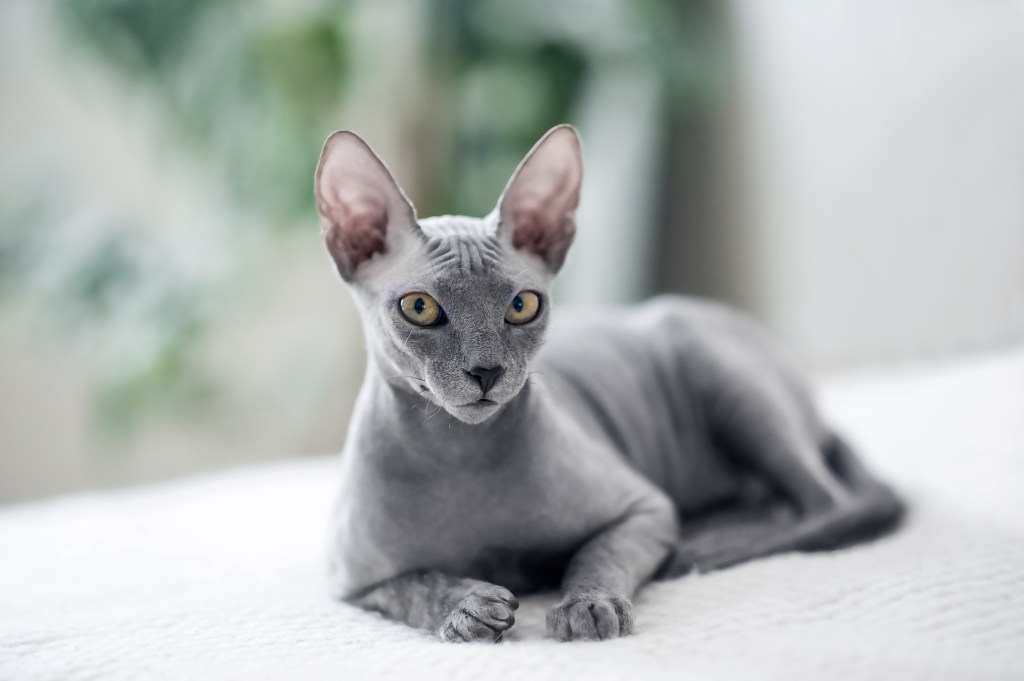
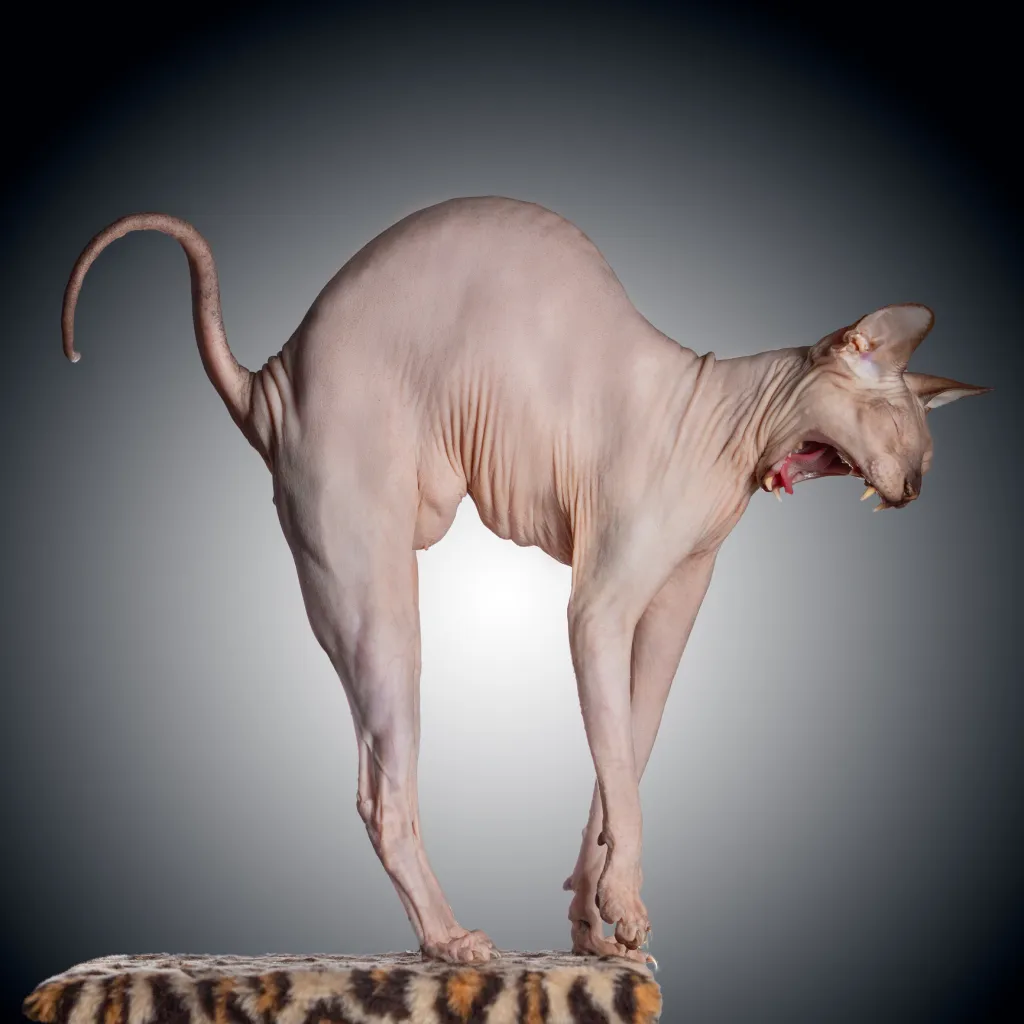
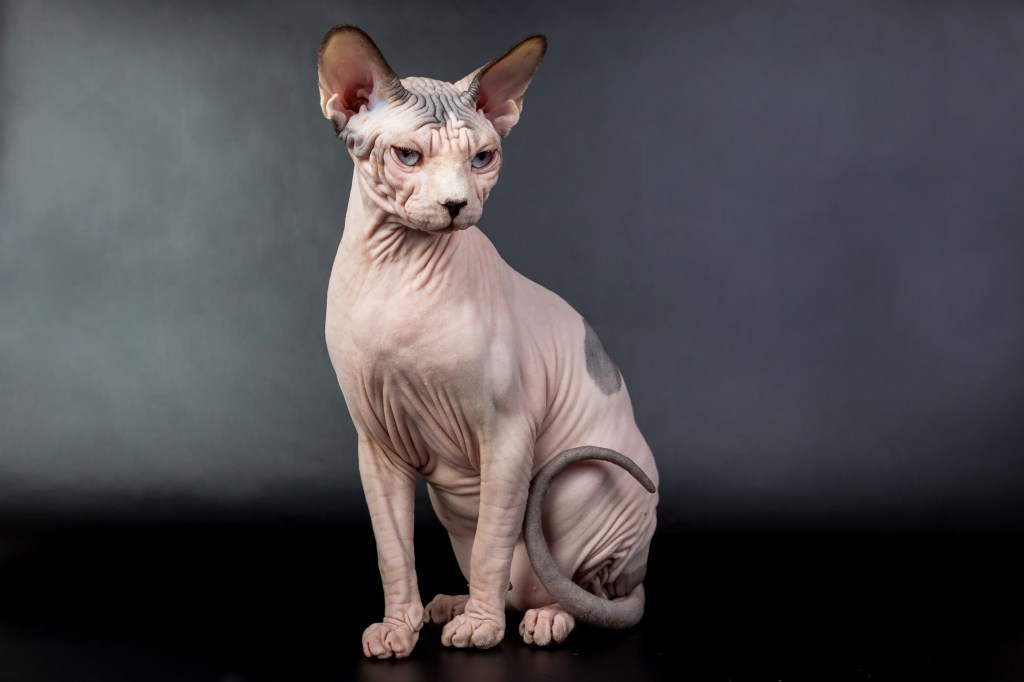
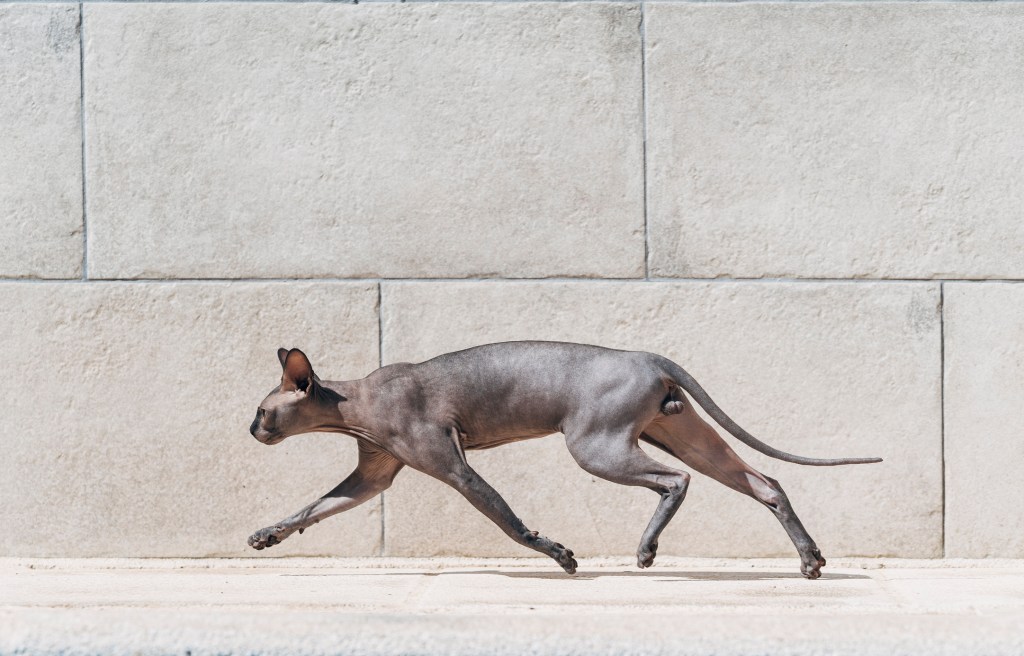
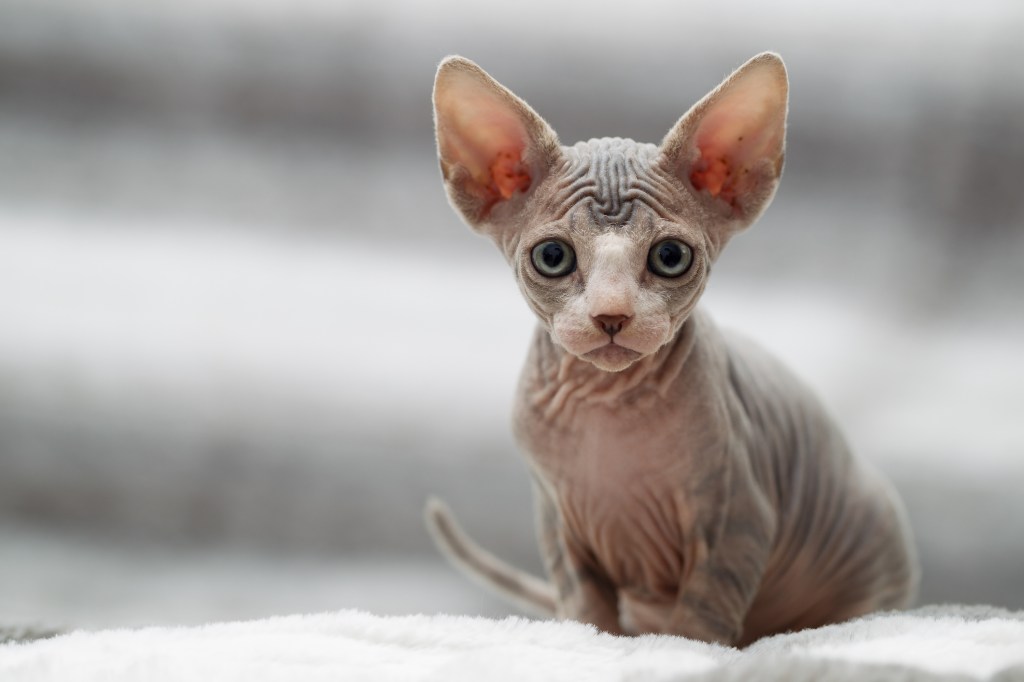
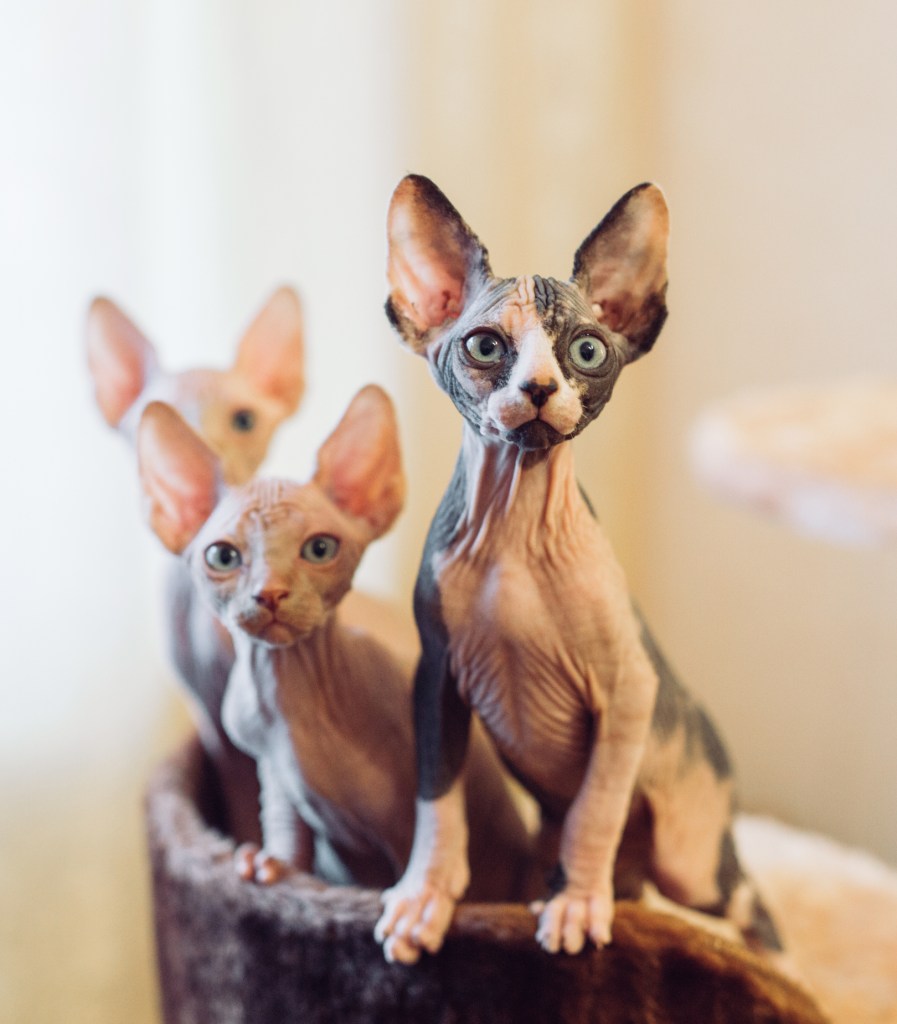
-
Affectionate with Family
Some cat breeds are typically independent and aloof, even if they’ve been raised by the same person since kittenhood; others bond closely to one person and are indifferent to everyone else; and some shower the whole family with affection. Breed isn’t the only factor that goes into affection levels; cats who were raised inside a home with people around feel more comfortable with humans and bond more easily.

See Cats Less Affectionate with Family -
Amount of Shedding
If you’re going to share your home with a cat, you’ll need to deal with some level of cat hair on your clothes and in your house. However, shedding does vary among the breeds. If you’re a neatnik, you’ll need to either pick a low-shedding breed or relax your standards. This furniture cover can make it easier to clean up cat hair and keep it off your sofa!
-
General Health
Due to poor breeding practices, some breeds are prone to certain genetic health problems. This doesn’t mean that every cat of that breed will develop those diseases; it just means that they’re at an increased risk. If you’re looking only for purebred cats or kittens, it’s a good idea to find out which genetic illnesses are common to the breed you’re interested in.
-
Potential for Playfulness
Some cats are perpetual kittens—full of energy and mischief—while others are more serious and sedate. Although a playful kitten sounds endearing, consider how many games of chase the mouse-toy you want to play each day, and whether you have kids or other animals who can stand in as playmates. A classic wand cat toy like this one is perfect for playful felines!
-
Kid-Friendly
Being tolerant of children, sturdy enough to handle the heavy-handed pets and hugs they can dish out, and having a nonchalant attitude toward running, screaming youngsters are all traits that make a kid-friendly cat. Our ratings are generalizations, and they’re not a guarantee of how any breed or individual cat will behave; cats from any breed can be good with children based on their past experiences and personality.
-
Friendly Toward Strangers
Stranger-friendly cats will greet guests with a curious glance or a playful approach; others are shy or indifferent, perhaps even hiding under furniture or skedaddling to another room. However, no matter what the breed, a cat who was exposed to lots of different types, ages, sizes, and shapes of people as a kitten will respond better to strangers as an adult.
-
Easy to Groom
Some breeds require very little in the way of grooming; others require regular brushing to stay clean and healthy. Consider whether you have the time and patience for a cat who needs daily brushing. You should definitely pick up this awesome de-shedding tool for cats of any hair length!
-
Intelligence
Some cat breeds are reputed to be smarter than others. But all cats, if deprived the mental stimulation they need, will make their own busy work. Interactive cat toys are a good way to give a cat a brain workout and keep them out of mischief. This scratcher cat toy can keep your smart kitty busy even when you’re not home!
-
Pet Friendly
Friendliness toward other household animals and friendliness toward humans are two completely different things. Some cats are more likely than others to be accepting of other pets in the home.
Sphynx History
The hairless Sphynx is an example of the cat breeds that come about accidentally. A genetic mutation brought about the birth of a hairless kitten to Elizabeth, a black and white domestic cat in Toronto, Canada. Elizabeth’s owner recognized that Prune, as the kitten was called, was unique and set about trying to reproduce him. He, along with other hairless kittens that were born in the mid- to late 1970s, was bred to furred cats, including the Devon Rex. The gene for hairlessness is recessive, so while some of the offspring were hairless, others had fur.
Originally known as Canadian Hairless Cats, according to The International Cat Association, breeders eventually settled on the moniker Sphynx for the unusual breed, a reference to the gigantic limestone sculpture in the Egyptian desert, worn smooth over the millennia through erosion by wind, sand and water. The Sphynx is recognized by the American Cat Fanciers Association, the Cat Fanciers Association and The International Cat Association, as well as other cat registries. Perhaps the world’s most famous Sphynx is Mr. Bigglesworth, played by Ted NudeGent, in the Austin Powers comedies.
Sphynx Size
The Sphynx is a medium-size cat. He typically weighs 6 to 12 pounds.
Sphynx Personality
It’s a good thing that the Sphynx loves attention because he draws it wherever he goes. He is demanding of human attention and will do anything for a laugh. “Look at me!” is his catchphrase. That makes him easy to handle by veterinarians or anyone else, and it’s not unusual for a Sphynx to be a therapy cat since he is so fond of meeting people.
When he is not receiving the attentions of his adoring fans, the curious and energetic Sphynx is exploring his surroundings, climbing his cat tree or otherwise seeking high places, chasing a bug or just generally getting into mischief. He is extremely fond of teaser toys and puzzle toys that challenge his athleticism and brains.
This is a highly social cat. If you are gone during the day, the Sphynx will enjoy having a friend in the form of another Sphynx, another cat or even a dog. He likes the company and, equally important, he likes having someone to snuggle with so that he stays warm. He loves to be held, and you can expect him to sleep with you, most likely under the covers. Think of it as having a living hot water bottle.
Sphynx Health
Both pedigreed cats and mixed-breed cats have varying incidences of health problems that may be genetic in nature. Sphynx are generally healthy, although the following diseases have been seen in the breed:
- Urticaria Pigmentosa: Feline Urticaria Pigmentosa is a skin condition that affects cats, similar to the human version but with some differences. It is a type of cutaneous mast cell tumor, which involves the abnormal growth and accumulation of mast cells in the skin.
- Hypertrophic Cardiomyopathy: A form of heart disease that is inherited in some cat breeds such as the Maine Coon. Heritability has not been proven in the Sphynx.
- Dental Issues: Dental problems, including gingivitis and periodontal disease, can be common in cats, and Sphynx are no exception. Regular dental care, including brushing their teeth and providing dental treats, can help prevent dental problems.
Sphynx Care
Despite his bald body, a Sphynx requires at least as much grooming as cats with fur and maybe even more. Their skin must be kept moisturized with a gentle, scent-free lotion or oil, and they need weekly baths so as not to leave greasy spots on your furniture and clothing. Use a gentle baby shampoo or moisturizing shampoo and rinse thoroughly, especially between the folds of the wrinkles.
If you begin bathing your Sphynx kitten while he is young, he will learn to accept and sometimes even enjoy baths. Baby wipes will help to keep him clean between baths. Brush the teeth to prevent periodontal disease. Daily dental hygiene is best, but weekly brushing is better than nothing.
Wipe the corners of the eyes daily with a soft, damp cloth to remove any discharge. Use a separate area of the cloth for each eye so you don’t run the risk of spreading any infection. Check the ears weekly. If they look dirty, wipe them out with a cotton ball or soft damp cloth moistened with a 50-50 mixture of cider vinegar and warm water. Avoid using cotton swabs, which can damage the interior of the ear.
Keep the litter box spotlessly clean. Like all cats, Sphynx are very particular about bathroom hygiene. Although the Sphynx feels warm to the touch, he doesn’t have a fur coat to keep him warm. If you’re cold, he probably is too. Buy him a nice sweater or two to help him retain heat.
It’s a good idea to keep a Sphynx as an indoor-only cat to protect him from diseases spread by other cats, attacks by dogs or coyotes, and the other dangers that face cats who go outdoors, such as being hit by a car. Sphynx who go outdoors also run the risk of being stolen by someone who would like to have such an unusual cat without paying for it. If your Sphynx has an outdoor enclosure where he can sunbathe, be sure to apply cat-safe sunscreen to his skin to prevent sunburn.
Sphynx Coat Color And Grooming
Bald, wrinkled and potbellied, the Sphynx is sometimes proclaimed to be ugly, but only by those who have a shallow understanding of beauty. His unusual body shape and the physiological and emotional warmth he emits are what attract people to him. Much like an apricot, the hard, muscular body of the Sphynx can be smooth or covered with a fine, soft down. The nose, toes, ears and tail may also have a light covering of fur.
To hug him is to melt into the warmth of his suedelike coat. A Sphynx does not have a higher body temperature than other cats, but it seems like it because there is no fur to serve as insulation. A broad chest and a well-rounded abdomen give him the appearance of having eaten just a little too much at dinnertime, but he should not be fat.
Supporting the body are firm, muscular legs set on oval paws with long, slender toes. Thick paw pads make the Sphynx look as if he is walking on “air cushions.” A long, slender, flexible tail is described as whiplike. A Sphynx with a little tuft of fur on the end of the tail is said to have a lion tail.
Sphynx kittens are heavily wrinkled, but as they grow the wrinkles smooth out, although some remain throughout the cat’s life. A Sphynx should not be so wrinkled that eyesight or other functions are compromised. The head of the Sphynx is a modified wedge shape, slightly longer than it is wide, with prominent cheekbones, large ears and large, lemon-shaped eyes. Whiskers and eyebrows are sparse to nonexistent.
The Sphynx comes in all colors and patterns, including white, black, red, chocolate, lavender, various tabby patterns, tortoiseshell, calico, bicolor, and pointed and mink patterns. The color is seen in the pigment of the skin as well as in whatever hair the cat has and can sometimes be difficult to distinguish.
Children And Other Pets
The active and social Sphynx is a perfect choice for families with children and cat-friendly dogs. He learns tricks easily and loves the attention he receives from children who treat him politely and with respect. He lives peacefully with dogs and other cats. Always introduce pets slowly and in controlled circumstances to ensure that they learn to get along together.
Sphynx Rescue Groups
More Info For You
If you’re also looking for a dog, please visit DogTime’s dog breed page!
